Shiratama Dango is a traditional Japanese rice dumpling known for its smooth, soft, and chewy texture. It is often enjoyed with sweet toppings and is a staple ingredient in various Japanese desserts, as its mild flavor complements other ingredients rather than overpowering them.
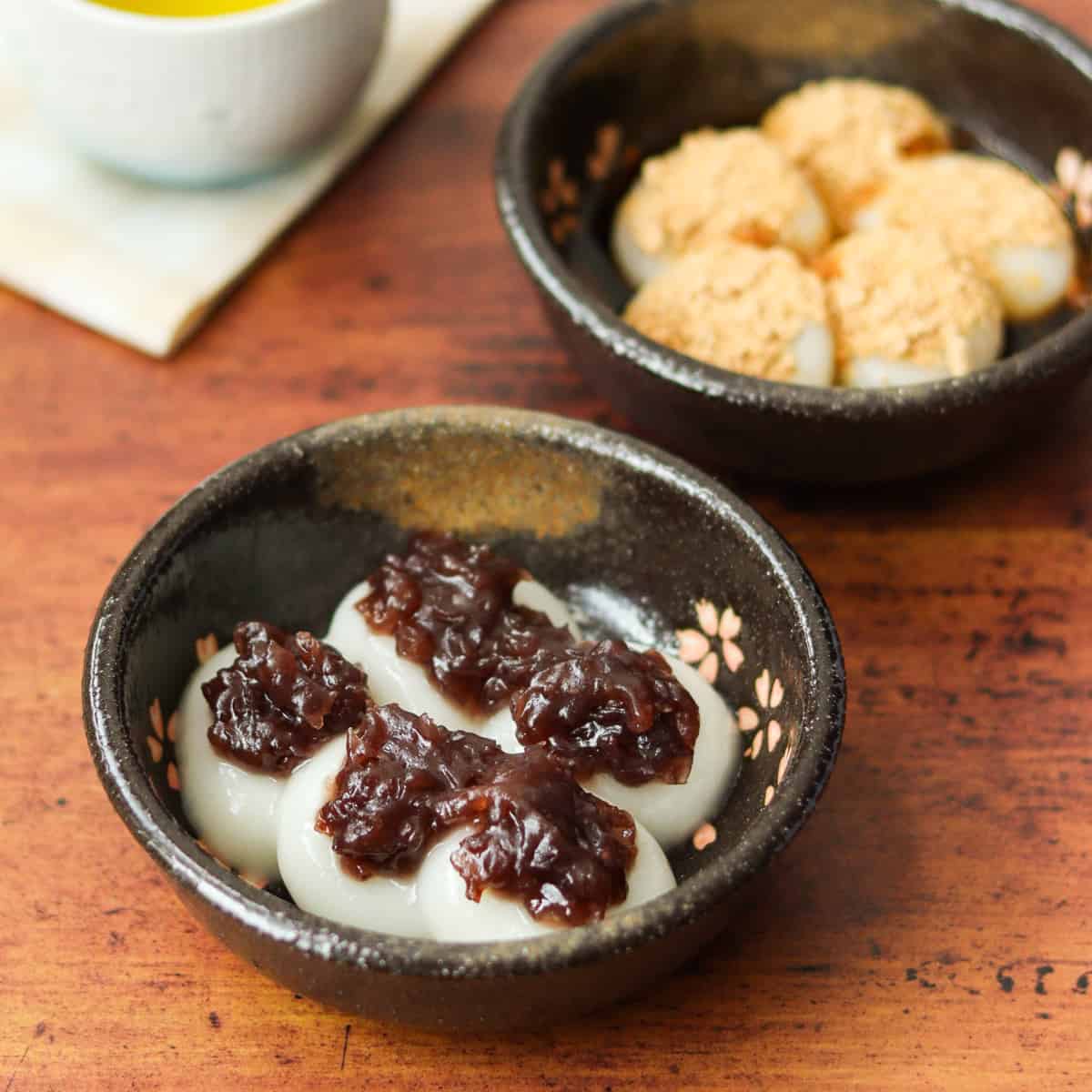
Jump to:
What is Shiratama Dango?
Shiratama Dango is a Japanese rice dumpling made by combining shiratamako, a type of rice flour, with water, then kneading the mixture into small balls before boiling. "Shiratama" means white balls, and "Dango" refers to Japanese rice dumplings.
It has a soft, stretchy, and sticky texture, yet little flavor on its own, so it is typically served with anko (sweet red bean paste), kinako (roasted soybean flour), or kuromitsu (brown sugar syrup). It is also commonly used as an ingredient in various desserts.
In addition to shiratamako, there are many types of rice flour used to make dango (Japanese rice dumplings). However, when making shiratama dango, only shiratamako should be used. Dango made with other types of rice flour is not considered "shiratama" dango. Using other types of rice flour results in a different texture, so be sure not to confuse the ingredients.
So, what is shiratamako?
You might be wondering: what is shiratamako?
Shiratamako is a type of rice flour made from glutinous rice that has been soaked in water, ground, and then dried after the starch has settled. Since it is essentially starch extracted from glutinous rice, the flour has a very fine texture.
When mixed with water and kneaded, it forms a smooth, soft dough used to make dango. One of its key features is that the dango stays soft and doesn't harden quickly, even after cooling.
In Japan, there are several types of rice flour, such as joshinko, mochiko, and dangoko, each made using different ingredients or methods. Because of these differences, the texture of dango made from them can vary.
Shiratama dango is perfect for enjoying as a dessert on its own or as a topping for other sweets. If you are interested in trying other kinds of dango, please refer to the linked page for the Mitarashi Dango recipe.
Methods to maintain the texture over time
Compared to other types of dango, shiratama dango tends to stay soft for a longer time. That said, it is still at its softest and most delicate right after being made, and its texture gradually deteriorates over time.
Reheating it briefly in the microwave on medium power (500W) can restore much of its original texture, but the following two methods are also sometimes used in Japan to help prevent it from hardening in the first place:
- Add sugar to the dough during the kneading process.
- Use silken tofu instead of water.
When adding sugar, incorporate an amount equal to 20% of the weight of shiratamako. When using silken tofu, use 10% more than the amount of water.
Both sugar and silken tofu have high water-retention properties, which slow down the degradation of starch in shiratamako. This helps ensure that the dango remains smooth, soft, and sticky in texture even as time passes.
However, both methods have the drawback of affecting the flavor of the dango. For that reason, it is generally recommended to use these methods only when you know you won't be eating the dango right away.
Popular desserts using shiratama dango
Let’s take a moment to talk about some popular desserts that use shiratama dango. While my recipe assumes you will enjoy this treat on its own, it can also be used as an ingredient in other desserts. In Japan, it is commonly found in:
- Anmitsu (a dessert that includes anko (sweet red bean paste), agar jelly, and fruit)
- Mitsumame (a dessert made with sweet boiled beans, agar jelly, and fruit)
- Zenzai (sweet red bean soup)
- Ice cream
All of these are popular desserts that incorporate shiratama dango. In addition to these, it also pairs well with pudding and chocolate. You might enjoy experimenting with this treat in your own local desserts.
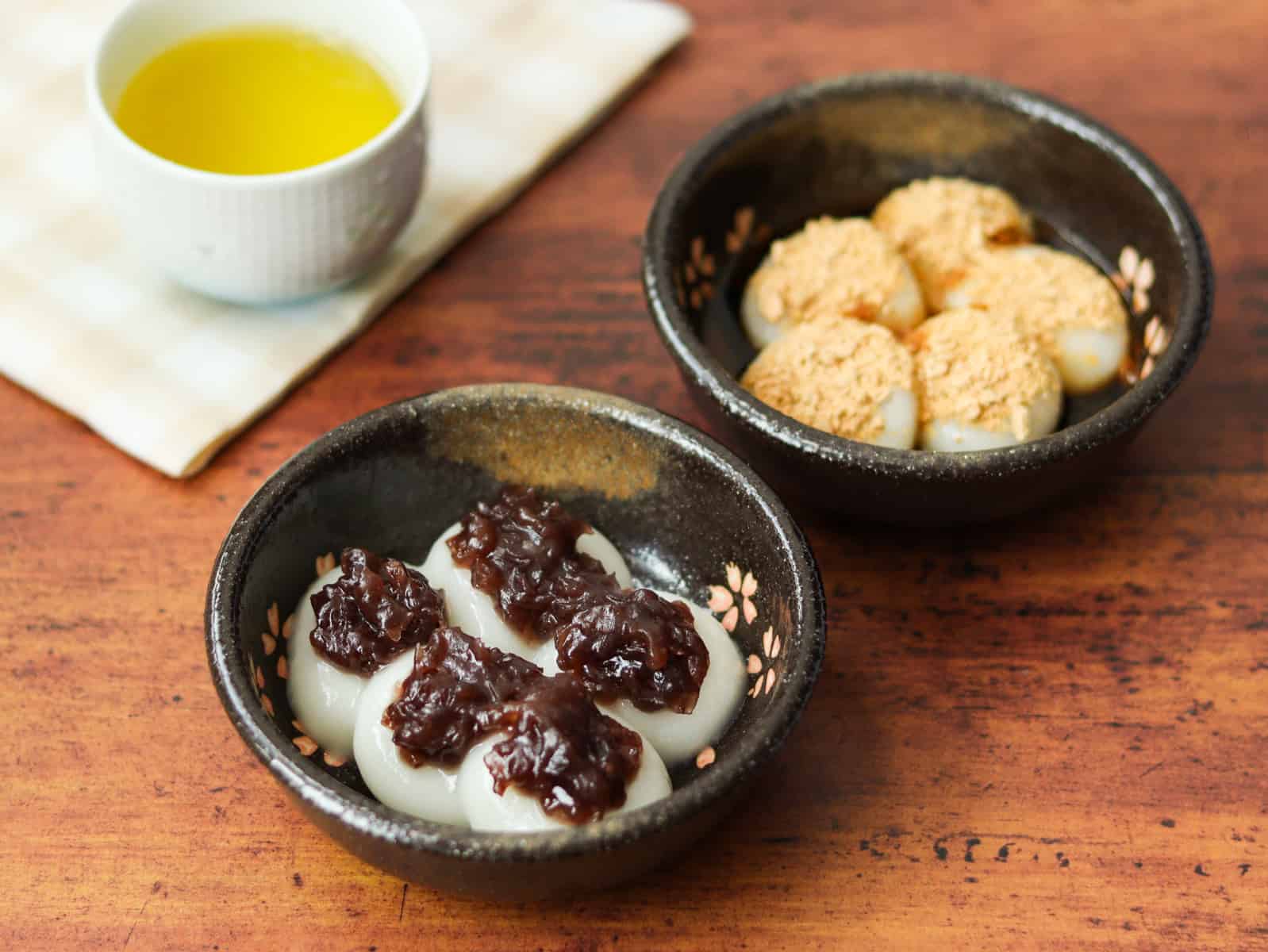
📋Step-by-step recipe
Ingredients
- 3.7 oz shiratamako (白玉粉) (a type of Japanese rice flour used to make shiratama dango)
- ⅖ cup water
Toppings (optional):
- anko (sweet red bean paste) (You can prepare it from scratch by following the instructions on the linked page.)
- kinako (roasted soybean flour)
- kuromitsu (brown sugar syrup)
Instructions
🕒 Total: 30 mins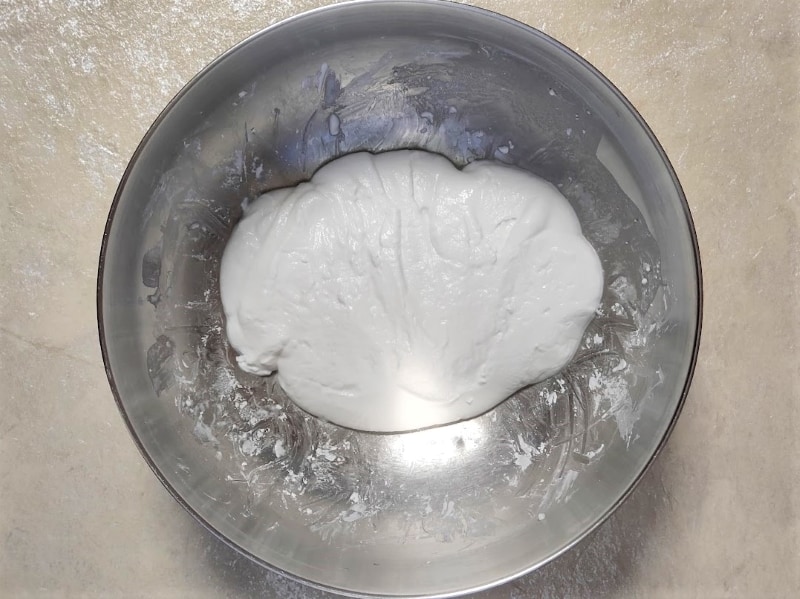
Step 1
Put shiratamako in a bowl and knead it while gradually adding water. If the dough doesn't come together, add a small amount of water (about ½ Tbsp) and continue adjusting until it forms properly.
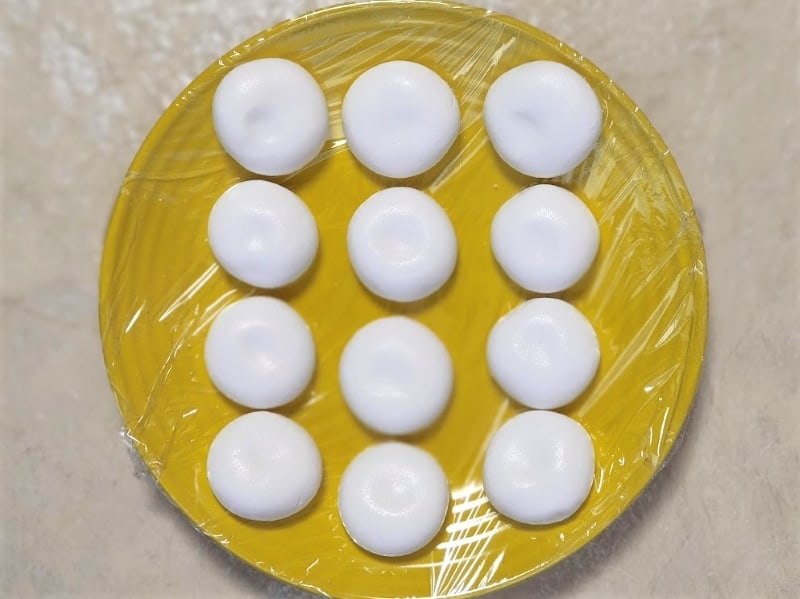
Step 2
Once the dough reaches a soft, earlobe-like consistency, shape it into small balls—about 0.58 oz (16.5 g) each—by rolling each piece between your palms. After that, make a small indentation in the center of each ball with your finger to help them cook more evenly.
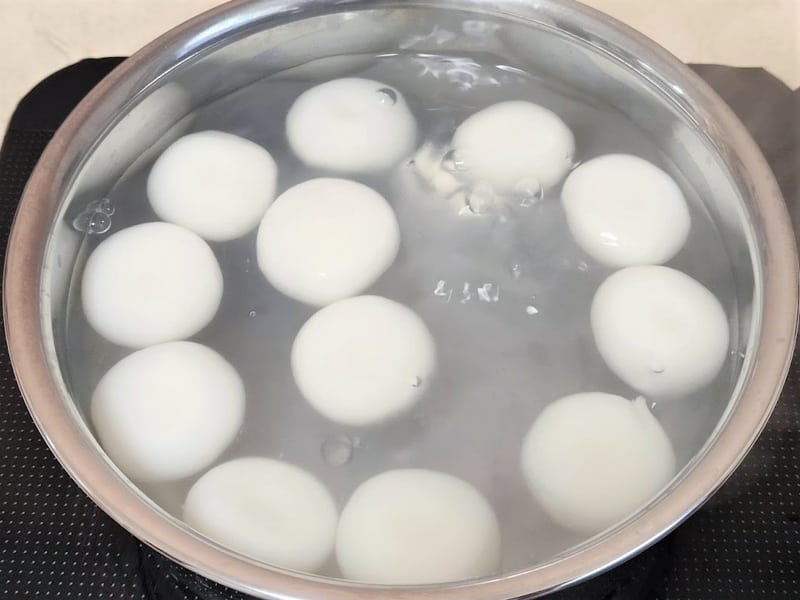
Step 3
Fill a pot with plenty of water and bring it to a boil. Once boiling, add the dough balls and cook them over medium heat for about 4 minutes, until they rise to the surface. After all the dough balls have floated, continue cooking for a few more minutes.
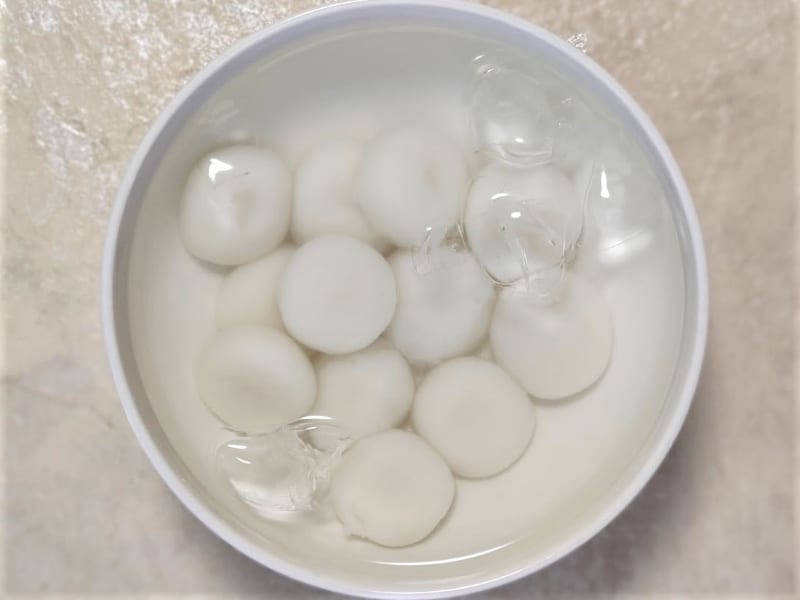
Step 4
Fill a bowl with ice water or cold water. Transfer the cooked dough balls to the bowl and let them cool for about 5 minutes.

Step 5
Drain the rice dumplings in a colander. Serve them on plates with anko, kinako, or kuromitsu, depending on your taste.
To store
You can store it in the refrigerator for up to 2 days. However, it is best to enjoy it on the same day it is made, as the texture tends to deteriorate over time. There are also ways to preserve the texture, though they may slightly affect the flavor.
Cooking tips
When forming the dough, be careful not to add too much water. Excessive water can keep the dough from coming together properly. Even if it seems like the dough needs more water, be sure to add it gradually and in small amounts.
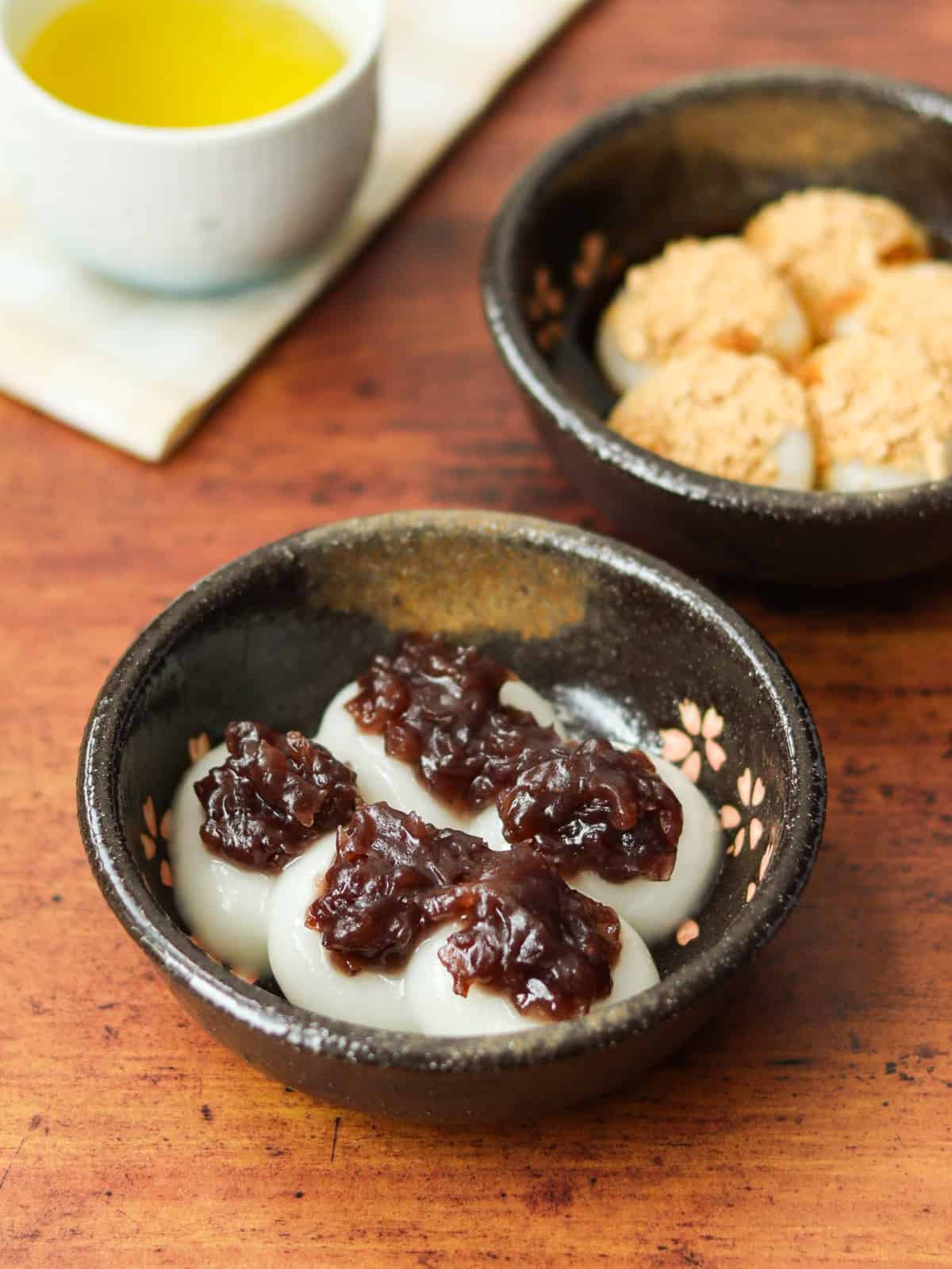
If you try this recipe, I’d love to hear what you think. Please consider leaving a review and star rating in the comments below. If you enjoyed it, I’d really appreciate it if you shared it with your friends.
More mochi and dango recipes you'll love
Recipe card

Shiratama Dango (Japanese Rice Dumplings)
Ingredients
- 3.7 oz shiratamako (白玉粉) (a type of Japanese rice flour used to make shiratama dango)
- ⅖ cup water
Toppings (optional):
- anko (sweet red bean paste) (You can prepare it from scratch by following the instructions on the linked page.)
- kinako (roasted soybean flour)
- kuromitsu (brown sugar syrup)
Instructions
- Put shiratamako in a bowl and knead it while gradually adding water. If the dough doesn't come together, add a small amount of water (about ½ Tbsp) and continue adjusting until it forms properly.
- Once the dough reaches a soft, earlobe-like consistency, shape it into small balls—about 0.58 oz (16.5 g) each—by rolling each piece between your palms. After that, make a small indentation in the center of each ball with your finger to help them cook more evenly.
- Fill a pot with plenty of water and bring it to a boil. Once boiling, add the dough balls and cook them over medium heat for about 4 minutes, until they rise to the surface. After all the dough balls have floated, continue cooking for a few more minutes.
- Fill a bowl with ice water or cold water. Transfer the cooked dough balls to the bowl and let them cool for about 5 minutes.
- Drain the rice dumplings in a colander. Serve them on plates with anko, kinako, or kuromitsu, depending on your taste.
Notes
- You can store it in the refrigerator for up to 2 days. However, it is best to enjoy it on the same day it is made, as the texture tends to deteriorate over time. There are also ways to preserve the texture, though they may slightly affect the flavor.

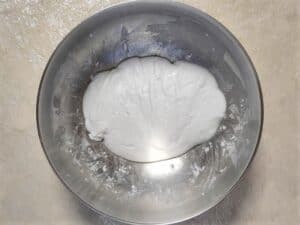
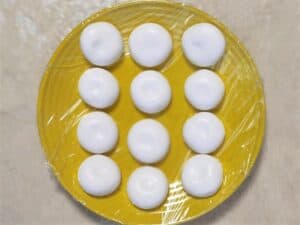
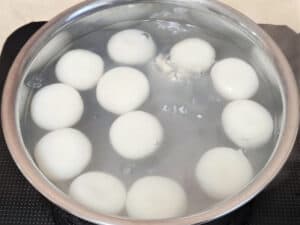
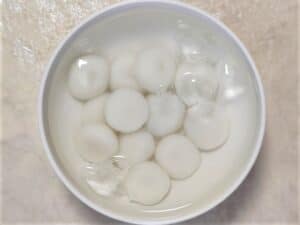
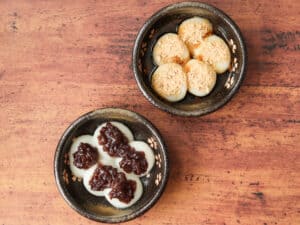
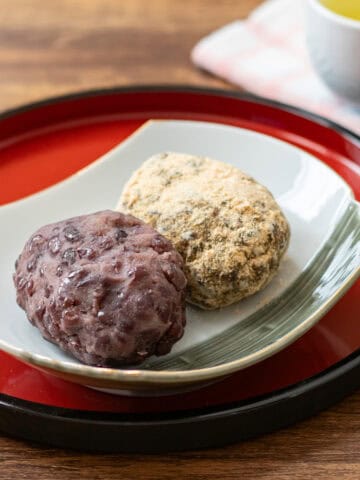
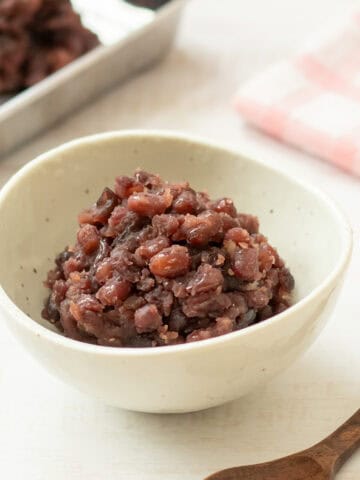
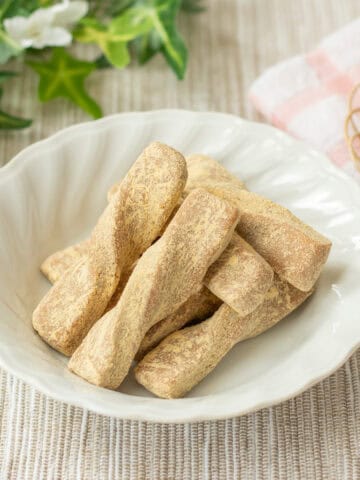
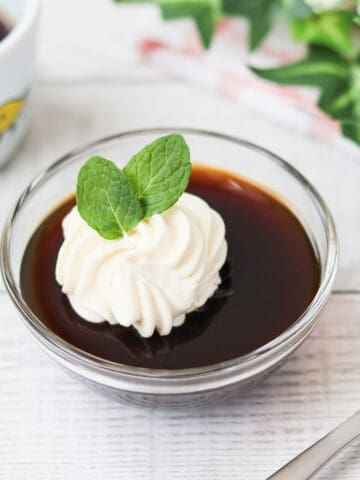
Leave a Rating and a Comment